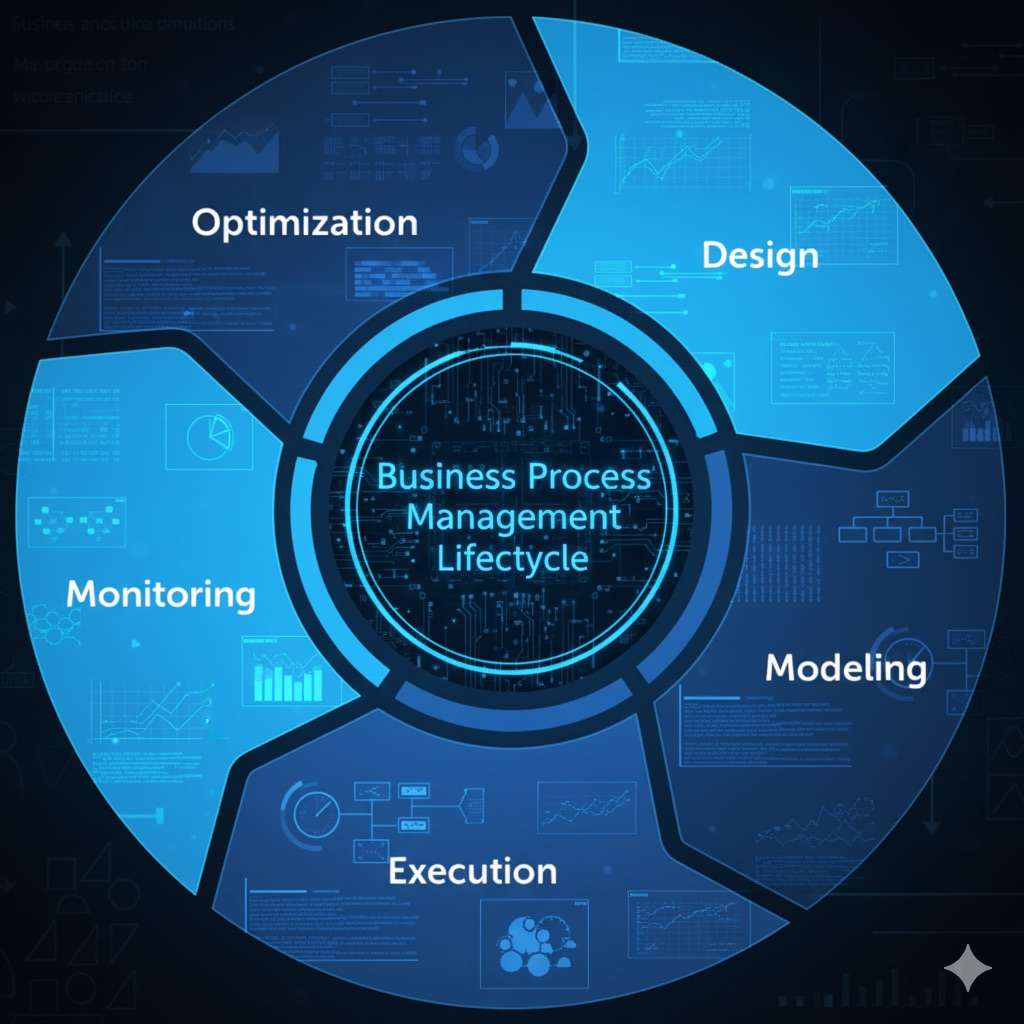Can Business Process Management Really Accelerate Your Digital Transformation?
BPM, or Business Process Management, is a holistic management approach used to analyze, model, monitor, optimize, and automate an organization’s business processes. Rather than focusing on individual workflows, BPM addresses end-to-end processes across the entire organization. Its primary goal is to make operations more efficient, agile, measurable, and compliant. By enabling organizations to understand how work gets done, quantify performance through digitization, and drive continuous improvement, BPM helps businesses not only gain control over their existing processes but also build a stronger foundation for sustainable growth.

Why Is Business Process Management Essential for Organizations?
Modern organizations operate with numerous processes, departments, and digital tools. Amid this complexity, inefficiencies, repetitive tasks, and communication gaps become inevitable. When each department uses its own systems independently, it often results in confusion and misalignment across the organization. This is where BPM comes into play — providing a structured approach to analyze, optimize, and automate business processes end-to-end.
Specifically, BPM delivers the following key benefits:
- Increased efficiency: Eliminating redundant steps accelerates workflows.
- Transparency: Every process becomes traceable and measurable.
- Compliance and standardization: Different teams work within the same set of standards.
- Customer satisfaction: Optimized processes enable faster and error-free service delivery.
- Sustainable growth: Scalable and repeatable processes pave the way for long-term growth.
In short, Business Process Management is the roadmap to operational excellence. It focuses on answering one fundamental question: “What is the best way to get work done?”
How Complex Can Operations Become Without BPM?
Organizations that do not implement Business Process Management as a structured initiative often face the following common challenges:
Processes Become Chaotic and Invisible
Operations managers struggle to track who performs which task and when. This leads to:
- Repetitive work and unnecessary approvals
- Higher error rates
- Wasted employee time
Lack of Cross-Departmental Coordination
When different departments perform the same tasks in different ways, errors and delays are inevitable. Without Business Process Management:
- Collaboration weakens
- Information sharing breaks down
- Decision-making becomes slower
Lack of Measurement and Performance Monitoring
In the absence of Business Process Management, performance data is often fragmented or insufficient. This results in:
- Decisions based on intuition rather than facts
- Inability to identify the real root causes of issues
- Failure to establish a continuous improvement mechanism
How to Implement Business Process Management Effectively
An effective BPM initiative is not just about deploying software — it requires a cultural transformation. To build a successful BPM strategy:
1) Map your processes: Define each process’s inputs, outputs, responsibilities, and dependencies.
2) Measure with data: Use data to identify bottlenecks and inefficiencies.
3) Integrate automation: Reduce human error in repetitive tasks through automation tools.
4) Embrace continuous improvement: Business Process Management is not a one-time project but an ongoing cycle.
5) Foster organization-wide ownership: Create a structure where everyone contributes to process excellence.
The Role of Low-Code Platforms
Low-code platforms are powerful tools that accelerate and democratize process management applications. They enable the creation of process automations, approval workflows, integrations, and dashboards with little to no coding.
The key contributions of low-code platforms to process digitalization include:
- Speed: New processes can be deployed within days.
- Flexibility: Processes can be easily updated as business needs evolve.
- User engagement: Not only IT teams, but also business units actively participate in process design.
- Cost efficiency: Development time and resource requirements are significantly reduced.
In summary, if BPM represents the strategic intelligence behind process management, low-code platforms serve as its accelerator.
The Only Key to Escaping Operational Chaos!
Business Process Management (BPM) is a critical strategic tool for operations leaders and digital transformation teams. It makes processes visible and manageable, enhances efficiency, and enables organizations to make fast, accurate, and data-driven decisions.
In organizations where process management is not applied, lost time, rising costs, and recurring errors significantly undermine the return on digital transformation investments. Through effective and well-planned process management, these losses are minimized — allowing organizations to become agile enterprises that gain and sustain a competitive advantage.

